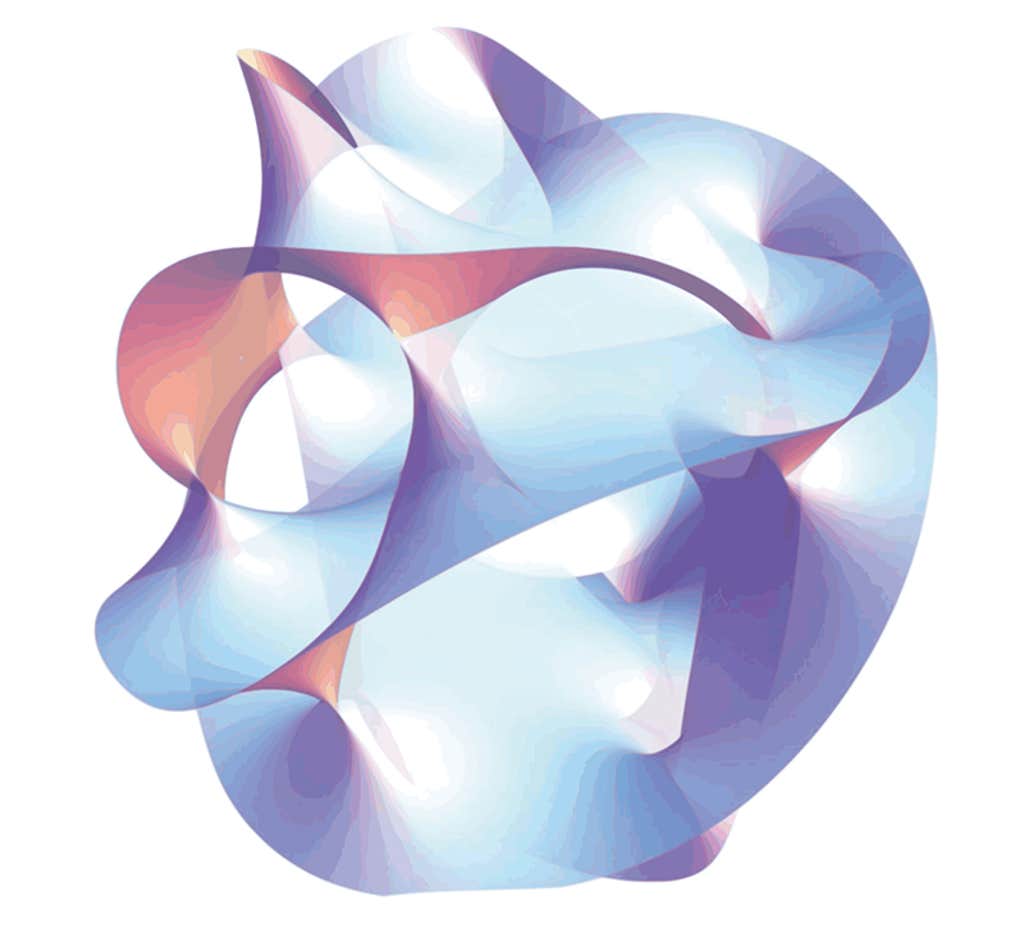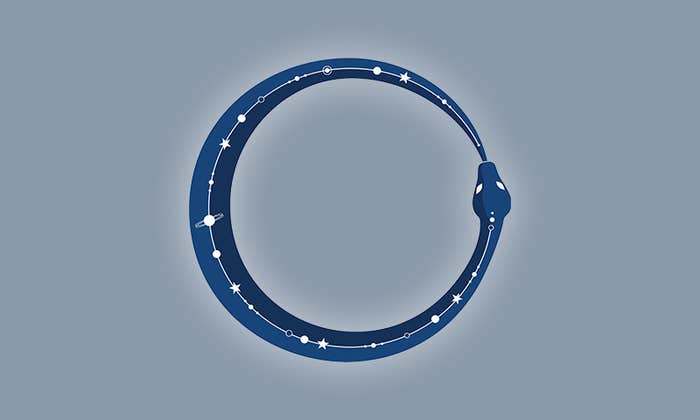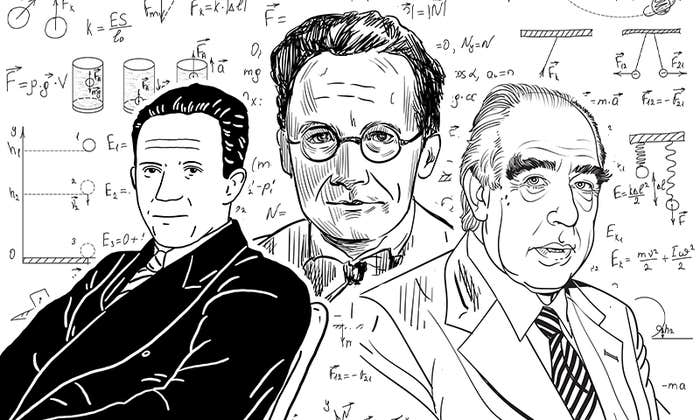Mathematics has long been the basis for advances in physics. Albert Einstein hailed general relativity as “a real triumph” for mathematics in 1915, when he discovered that purely mathematical work, more than a half-century old, perfectly described the fabric of spacetime in his theory of gravity. How could math conceived with no application in mind, he wondered later, prove “so admirably appropriate to the objects of reality?”
Math’s service to physics, now often taken for granted, is rooted in its origins. Mathematics was, after all, invented for surveying, quantifying, and understanding the physical world. In Mesopotamia, the Sumerians developed a counting system, leaving behind clay tablets inscribed with multiplication tables. Their purpose? To tally goods and property. In the intervening millennia, what began as a tool to grease the wheels of government and commerce took on a life of its own. But, while expanding into areas of abstraction so obscure they can only be grasped after years of training, mathematics has continued to underpin the great breakthroughs in physics.
Recently, though, the tables have turned. Now insights and intuitions from physics are unexpectedly leading to breakthroughs in mathematics. After going their own way for much of the 20th century, mathematicians are increasingly turning to the laws and patterns of the natural world for inspiration. Fields stuck for decades are being unstuck. And even philosophers have started to delve into the mystery of why physics is proving “unreasonably effective” in mathematics, as one has boldly declared. That question hinges on a largely unappreciated, perplexing, and profound link between the rules that govern the behavior of the cosmos and the most abstract musings of the human mind.
The experience of mathematical beauty excites the same parts of the brain as beautiful music, art, or poetry.
Why should physics—rooted in making sense of real things in the world like apples and electrons—provide such good leads for solving some of the toughest problems in mathematics, which deals with intangible stuff, like functions and equations?
“Physicists are much less concerned than mathematicians about rigorous proofs,” says Timothy Gowers, a mathematician at the Collège de France and a Fields Medal winner. Sometimes, he says, that “allows physicists to explore mathematical terrain more quickly than mathematicians.” If mathematicians tend to survey—in great depth—small parcels of this landscape, physicists are more likely to skim rapidly over vast tracts of this largely uncharted territory. With this perspective, physicists can happen across new, powerful mathematical concepts and associations, to which mathematicians can return, to try and justify (or disprove) them.
The process of physics inspiring mathematics is, in fact, as old as science itself. The ancient Greek mathematician and inventor Archimedes described how the laws of mechanics had spurred some of his most important mathematical discoveries. Then there’s Isaac Newton, who (alongside his contemporary, the German polymath Gottfried Wilhelm Leibniz) famously developed an entirely new kind of math—calculus—while trying to understand the motion of falling objects.
But in the middle of the 20th century, the flow of new math from physics all but dried up. Neither physicists nor mathematicians were much interested in what was happening on the other side of the fence. In mathematics, an influential set of young French mathematicians called the Bourbaki group sought to make mathematics as precise as possible, rebuilding whole fields from scratch and publishing their collaborative work in an effort—they hoped—to facilitate future discoveries. Physicists, meanwhile, were excitedly developing path-breaking ideas such as the Standard Model—still physicists’ best theory of the atomic and subatomic world. For many of them, math was just a handy tool, and they had no interest in the austere vision of mathematics championed by the Bourbakis.
Yet a reconciliation was afoot, spearheaded by the late British-Lebanese geometer Michael Atiyah. With rare intuition, and a little luck, Atiyah, also a Fields medalist, often alighted on areas that would later be of interest to theoretical physicists.
“In the mid 1970s, he became convinced that theoretical physics was by far the most promising source of new ideas,” Nigel Hitchin, a mathematician and emeritus professor at the University of Oxford who collaborated with Atiyah wrote in 2020 of his former colleague. “From that point on, he became a facilitator of interactions between mathematicians and physicists, attacking mathematical challenges posed by physicists, using physical ideas to prove pure mathematical results, and feeding the physicist community with the parts of modern mathematics he regarded as important but were unfamiliar to them.”

One of Atiyah’s long-term collaborators, who he first met in 1977, was the mathematical physicist Edward Witten. More than 20 years Atiyah’s junior, Witten later became a pioneer of string theory, an idea that posits that tiny one-dimensional vibrating strings are the fundamental building blocks of the universe, rather than the particles of the Standard Model.
Initially hailed as a possible “theory of everything” that would unite quantum theory with Einstein’s theory of gravity, string theory has to date arguably had a bigger impact on some of the most abstract fields of mathematics, such as algebraic geometry and differential topology, than in physics. In these areas, Witten and other string theorists have been able to produce precise conjectures that mathematicians have later proved.
In 1991, for example, physicists Philip Candelas, Xenia de la Ossa, and their colleagues applied string theory to a decades-old puzzle in enumerative geometry, an ancient branch of mathematics dedicated to counting the number of solutions to geometrical problems. At its simplest, this asks questions such as “How many lines can pass through two points on a plane?” (One.) Or Apollonius’ famous problem, “How many circles can be drawn that touch (are tangent to) three given circles?” (Eight.)
Candelas and his collaborators were able to use tools from string theory to solve a particularly sticky problem in enumerative geometry: counting the number of certain kinds of curves in Calabi-Yau manifolds, strange six-dimensional shapes that are central to string theory. Their result connected two kinds of geometry, “symplectic” and “complex,” that mathematicians had studied in isolation from each other for decades, thinking they were unrelated. This sort of advance—one that connects two fields that were thought to be unrelated—is considered a “deep” result in math: You can suddenly use tools from one to solve problems in the other, enabling and accelerating advances.
Just a few years later, in 1995, Witten proposed that five different versions of string theory, each requiring 10 dimensions, were all different aspects of a single 11-dimensional conceptualization he called “M-theory.” Though M-theory remains unproven, mapping the correspondences between the different theories has led to startling mathematical discoveries. “It feels like every month string theory is giving new structures to mathematicians in an unprecedented way,” says mathematical physicist Yang-Hui He of the London Institute for Mathematical Sciences.
The sort of math that emerges from studying reality is the sort our brains tend to like.
That string theory is a rich source of such unexpected relationships, or “dualities,” between two mathematical worlds, continues to excite mathematicians today. Physicist He and his collaborator string theorist Federico Carta, also of the London Institute, were studying the simplest type of Calabi-Yau manifold, called a K3 surface, when they stumbled across a relationship between the surface’s “homotopy groups,” which are used to classify shapes in topology, and a symmetry group, called “Matthieu 24.” The pair’s discovery reveals an unanticipated connection between two disparate fields of pure mathematics—topology, the study of shapes, and an area of modern algebra called group theory, which concerns the types of symmetry that objects possess.
Why physics should give rise to such interesting mathematics, says He, is a “deep question.” There are an infinite number of patterns and structures that mathematicians could study, he says. “But the ones which come from reality are ones which we have an intuition about at some level.”
Hitchin agrees. “Mathematical research doesn’t operate in a vacuum,” he says. “You don’t sit down and invent a new theory for its own sake. You need to believe that there is something there to be investigated. New ideas have to condense around some notion of reality, or someone’s notion, maybe.”
This raises the question of whether physics feeds math merely by providing a keener motivation for exploring it and a focus for mathematicians’ energies. Guided by intuitions about how the world should work, and a plausible endpoint, mathematicians can sometimes make speedier progress on a problem than they otherwise would.
It would also explain a curious fact: “Bad” physics can sometimes lead to good math.
Vortex theory, for instance, was an early attempt by British mathematical physicist William Thomson (Lord Kelvin) to explain why atoms came in a relatively small number of varieties. He pictured atoms as spinning rings which could be tied in intricate knots, with each knot corresponding to a different chemical element. The theory was abandoned after the discovery of the electron—but the mathematics led to the development of knot theory, which has since both become a fecund area for pure mathematicians to explore and found surprising applications in fluid dynamics and for understanding tangled molecules like DNA.
For Atiyah, the enigmatic relationship between physics and math all came down to the human brain. “Humans are a product of long evolution, in which powerful brains were an advantage. Such brains evolved in the physical world, so evolutionary success was measured by physical success,” he explained in a 2018 interview. “Hence human brains evolved to solve physical problems and this required the brain to develop the right kind of mathematics.” To do so, the brain must also have adapted to recognizing and appreciating mathematical patterns in nature. Atiyah even co-authored a brain-imaging study in 2014 that concluded the experience of mathematical beauty excites the same parts of the brain as beautiful music, art, or poetry. That might explain why physics can be a lodestar for mathematicians: The sort of math that emerges from studying reality is the sort our brains tend to like.
In a 2010 paper with Hitchin and Dutch theoretical physicist Robbert Dijkgraaf, then of Princeton University, Atiyah went on to further highlight the successful use of physics in mathematics. Since then, however, there has been scant work to try to understand the phenomenon.
One philosopher who has recently re-examined the issue is Daniele Molinini, at the University of Bologna. His 2023 paper, published in The British Journal for the Philosophy of Science, responded to an oft-cited 1960 essay entitled “The Unreasonable Effectiveness of Mathematics in the Natural Sciences” written by Nobel laureate physicist Eugene Wigner. Molinini’s cheeky response instead explored “The Unreasonable Effectiveness of Physics in Mathematics.” His surprising answer is that some laws of physics may be as incontrovertible as a mathematical theorem. “There are some principles about the world that we have to take as fundamental,” he says.
Philosophers broadly agree that mathematical truths are “necessary,” in that they have to be true in all possible worlds. Truths about nature, empirical facts, are different—they’re contingent. Light travels at a certain speed, but arguably it could have been otherwise in a differently set up universe. That is, mathematical truths have been, and will always be, true, no matter what.
Might there be certain laws of physics that are also “necessary” in the same way? In his paper, Molinini argues that the principle of conservation may be one such law. In physics, some properties of a system, such as energy or momentum, can’t change. A bicyclist freewheeling down a hill, for example, is converting her gravitational potential energy into movement energy, but the total amount of energy she and her bike have stays the same.
The universe itself is not just described by mathematics but is made of mathematics.
If such conservation is “necessary,” Molinini contends, that may explain how Archimedes was able to successfully infer the truth of geometric proofs by mechanical considerations, a feat which is otherwise puzzling. The physics and the math, in this case, are two sides of the same coin: Both are true because they draw on the same fundamental principle.
Another view, famously articulated in the early 17th century by Galileo and often championed by mathematicians, is that the universe is written in the language of mathematics. That idea has ancient origins, going back to at least Pythagoras and his followers, but a more recent, and extreme, version is Max Tegmark’s mathematical universe hypothesis, in which the universe itself is not just described by mathematics but is made of mathematics.
In Tegmark’s telling, our universe is just one of an infinite number of parallel universes and all the infinite possibilities of mathematics—every theorem, every proof—are realized somewhere in this multiverse. So, no wonder physics inspires new discoveries in math—the reality physics describes is, at bottom, mathematical anyway. “There’s an intimate connection between empirical science and mathematics,” says Mark Colyvan, a philosopher at the University of Sydney who has studied the relationship between math and physics. “One conclusion one could draw is that somehow the world itself is mathematical.”
In both cases, however, the mathematics of known physics is just a tiny fraction of all the mathematics out there (nearly all of which is likely to be far less interesting), so this view doesn’t really explain why math emerging from physics should be unusually rich.
Molinini is now challenging a popular philosophical explanation for math’s applicability, “mapping,” which he believes can’t account for why good math can flow from physics. Mapping suggests that math is applied to physics by turning physical concepts, like mass or separation, into mathematical entities, such as the equation for Newton’s law of gravitation, which can then be used to calculate something that is then mapped back into a physical property—for instance, the attraction between two objects. But Molinini argues that that process of mapping breaks down when one tries to reverse it to explain how math can emerge from physics.
There is burgeoning interest in this question from philosophers, he says, who have until now focused on the converse problem of why math can be applied to the empirical sciences.
“Modern physics is providing mathematicians with a whole host of new tools and unexpected leads,” says the London Institute’s He. “And in future, physics and math will need to work together even more closely to solve some of the biggest problems in pure math.”
The Langlands program, conceived by Robert Langlands in the 1960s and often called “the grand unified theory of mathematics,” is one such area, says He. One arm of the program, the geometric Langlands, was purportedly recently settled by a team of mathematicians who presented a proof spanning five papers and 800 pages. A kernel of that proof rests on insights originally drawn from conformal field theory, a branch of physics that is a cornerstone of string theory, among other areas. He believes that mathematicians will need to draw on more physics to explore the implications of that proof, as well as to make progress on the other arms of the program.
Similarly, mathematicians have already tapped physics in their attempts to make progress on the Riemann hypothesis and Birch and Swinnerton-Dyer conjecture—two of the most challenging open problems in math. An alliance between the two fields, suspects He, will be key to finally unlocking these behemoths.
“Physics and math are starting to become one again, like they were in Newton and Gauss’ day,” says He, who trained as a theoretical physicist but is increasingly drawn to applying physical ideas to problems in pure math.
It’s an intriguing thought. The story of the universe might be written in the language of mathematics. But beautiful as the tale seems to be, the signs are that understanding more than physicists already do will demand increasingly exotic and sophisticated mathematical tools, some of which are yet to be invented. Breaking down the barriers between the two fields could open new worlds of understanding in both. ![]()
Lead image: Art Furnace / Shutterstock




























